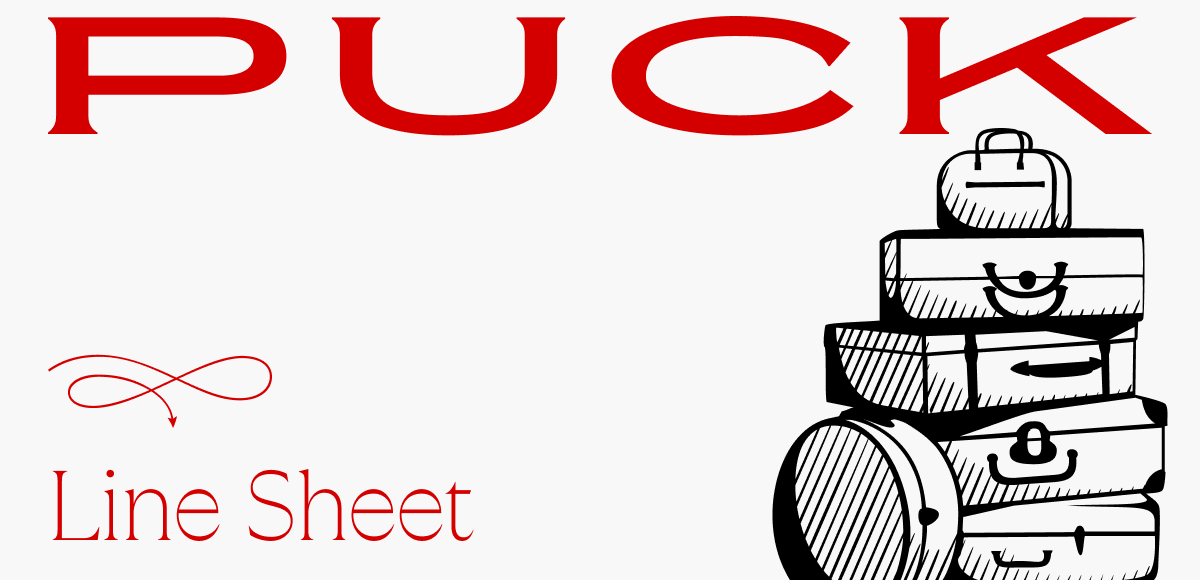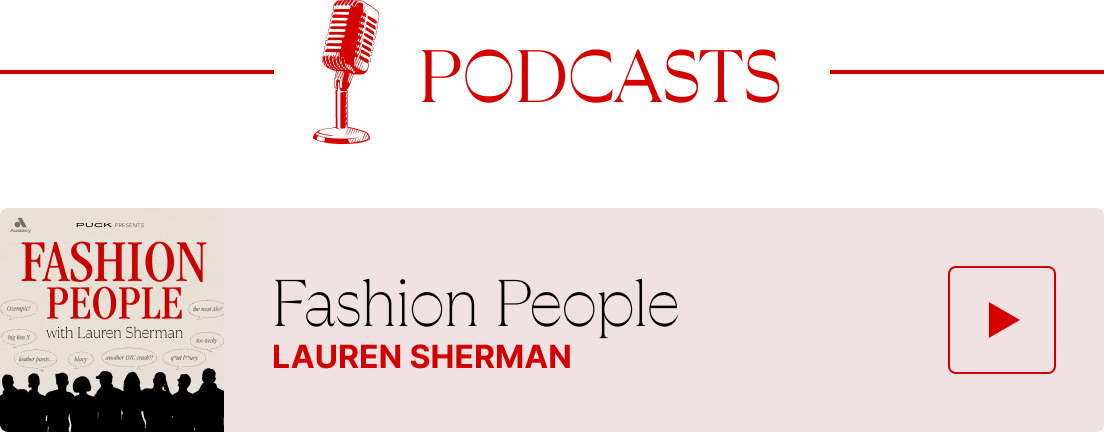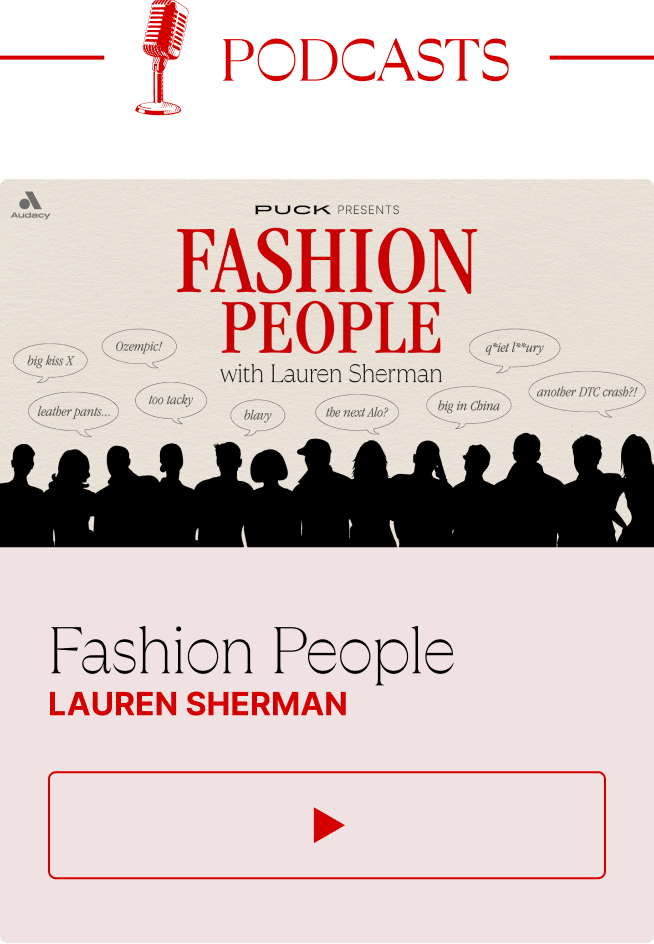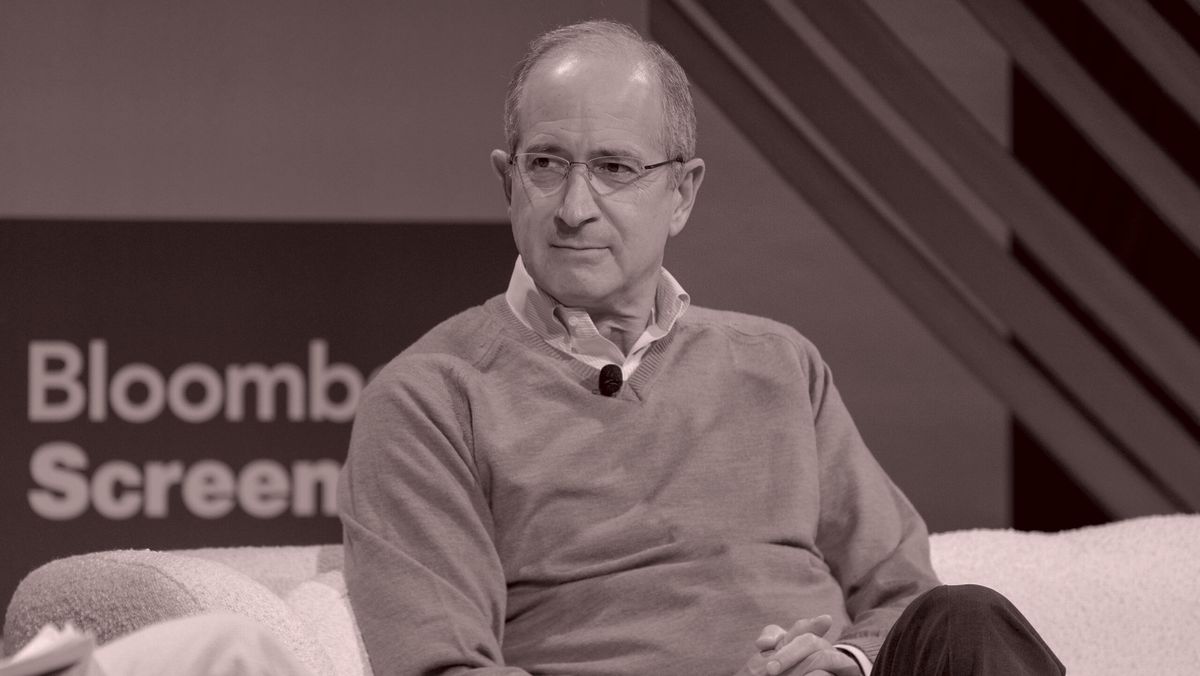Hi, and welcome back to Line Sheet. I’m heading to New York for 10 days on
Monday morning, so I plan on doing nothing this weekend… psych! Tomorrow night is the 15 Percent Pledge Gala, so see you there, or at the 15th Street Block Party on the Paramount lot, where you can shop Black-owned brands, including Christopher John Rogers (this is good) and Diotima (so is
this). Buy tickets here.
Today, Sarah “SShapiro@puck.news” Shapiro is back with news and notes on Mytheresa’s performance this past quarter and what it says about the future of LuxExperience (😬), Quince’s $120 million series C (my husband just bought a cashmere cardigan for
research), and ShopMy’s own $77.5 million financing round (influencers heart affiliate links). Sarah also figured out what people are actually buying these days. (My bet is on scrunchy boots of all heights.) Up top, I offer a crucial update on what’s happening in Paris, including the official exit
of Kim Jones from Dior.
P.S.: I hope all you new Inner Circle members are enjoying Thursday’s very special email. Yesterday, I broke news about Celine,
Matchesfashion, and New York magazine, and provided the sort of analysis and dish that you can
only find here. If you haven’t signed up yet, do so now, and access Thursday’s email here. Otherwise, you’ll be replaced by A.I.
P.P.S.: If you are in Los Angeles this weekend, another thing you might want to do is check out
Architecture Books, soft-opening Saturday at 8010 Melrose Ave., across the street from our favorite vintage store, Scout. The owners, Mahfuz Sultan and Chloe Wayne Sultan, are also the directors of a documentary produced for Vogue about Virgil
Abloh.
Mentioned in this issue: Kim Jones, Jonathan Anderson, Loewe, January retail doldrums, Kirna Zabête, Sacai, Khaite, Dôen, Maria Grazia Chiuri, LVMH, Phoebe Philo, Céline, LuxExperience, Mytheresa, Miu Miu, Alaïa, Bulgari, ShopMy, Sand Hill Road, TikTok, Campbell, Jett Puckett, Quince, Vuori, and many, many more…
But first… the latest designer switcheroo machinations out of Paris…
|
The news that Kim Jones is leaving Dior was finally released this
morning. As these neutered types of announcements tend to go, it raised more questions than answers. It’s widely understood that Jonathan Anderson is headed to Dior—or at least has left the Loewe building—and will design both menswear and womenswear. But Maria Grazia Chiuri, the brand’s womenswear designer, is scheduled to produce three more shows: Ready-to-Wear in February; a repeat presentation in Kyoto in April; and then a Cruise show in Rome, her
hometown, in May. Will LVMH wait until after Chiuri’s show to announce Anderson? I certainly hope not—that feels like an awful way to drag things out, although there may be a delay given that Chiuri’s next move (Fendi or retirement) is uncertain.
However, I was able to unearth some intel that reinforces the open secret of Anderson’s appointment. On September 20 of last year, he established a new company in the U.K. called
Noguer Limited, and appointed himself the director. My understanding is this is essentially a holding company for his studio so that he will be able to contract designers directly. Theoretically, LVMH will pay him a lump sum, and then he’ll pay the designers. That way, there’s less tax liability, and also no noncompetes. So if he were to leave Dior or LVMH, he could take his studio with him. (This approach is popular with U.K.-based designers in particular. Jones did it like this, and I’m told
Phoebe Philo had a similar setup at Céline.) Notably, Anderson’s holdco was created last September, just as rumors around his appointment at Dior intensified.
Also in Paris, WWD is reporting that fashion-insider favorite (and LVMH Prize winner) Duran Lantink is in talks to be the next creative director of Jean Paul Gaultier. Makes sense. I hadn’t heard Lantink’s name, per se, but I was
previously told a decision had been made, and that the designer was young, “edgy,” and in dialogue with Gen Z.
Now, here’s Sarah…
|
|
|

|
Sarah Shapiro
|
|
Three Things You Should Know…
|
- Prayers for Mytheresa:
At first glance, Mytheresa’s 75 percent stock price decline over the past five years should evoke few sentiments beyond despair and horror. Such feelings would only be compounded by the collective failure of the luxury e-commerce space, the recent YNAP acquisition, and a new, seemingly A.I.-generated name: LuxExperience. (Making matters worse, the company trades as LUXE.) And yet, Mytheresa’s 1Q25 results offer glimmers of optimism, such as an average order value of €720—a leading
indicator that the brand has real penetration among luxury consumers who shop regularly for labels like Alaïa, The Row, or Miu Miu.
I’m actually quite impressed with their slow and steady approach to growth. Rather than building out a private label, Mytheresa has pursued exclusive partnerships with luxury brands—using merchant insights to drive product development opportunities while simultaneously leveraging the cachet of luxury labels that their customers covet. This is smarter and more
efficient than the laborious (albeit higher-margin) endeavor of designing, producing, and marketing a new label themselves.
Their calculated pivot into fine jewelry has turned heads, too. The recent Bulgari partnership caught the eye of many industry insiders. Meanwhile, the company is transforming its jewelry portfolio from demi-fine into a comprehensive luxury offering that its
customers are already ostensibly shopping for. There are plans to expand from 28 to 40 carefully curated brands.
Not only do I co-sign this strategy, but I think it may be the only available path. And, as Lauren has previously suggested, it should probably be accompanied by a strategic decision to take the company
private. The luxury commerce business is notoriously capricious, but the latest iteration of Mytheresa’s playbook (sorry, LuxExperience’s playbook!) suggests it’s becoming more sophisticated. Hopefully, the company finds a capital partner to help continue its rehabilitation isolated from the short-term-return instincts of the public market.
- ShopMy ends up with a $77.5M bag!: As you may recall, I recently
reported that affiliate disruptor ShopMy was doing the Sand Hill Road hustle to raise a Series B and carve out its piece of the $24 billion creator marketing industry. I’d heard that the company was looking for a $60 million investment, which certainly would have qualified as a tidy growth round for a tech platform with major ambitions. As it turns out, there were even
more investors hanging around the hoop. As the Journal reported last week, ShopMy ended up raising $77.5 million at a $410 million valuation.
The round was led by Bessemer and Bain Capital Ventures, with proceeds from strategic investors including Gap’s chief business officer Eric
Chan, as well as TikTok influencers Campbell (a.k.a. “Pookie”) and Jett Puckett. (These sorts of token investments usually placate the egos of founders and titillate the media, but rarely impact the business and often just muddy up the cap table.) On a recent episode of The Powers
That Be, Puck’s flagship podcast with the Vuori-curious Peter Hamby, I acknowledged that Pookie and Jett seemed more Team LTK. So allow me to correct the record! They will certainly be more invested in ShopMy—and presumably have some deal language preventing them from commingling with competitors—especially with their own money on the line. (And if they don’t have that language, ShopMy shouldn’t have taken their money… Their potential presence on LTK will
be weaponized moving forward.)
After the deal closes and the money hits the operating account, I’d expect ShopMy to deploy the capital on an explosion of affiliate content and tech. In particular, I’d expect a lot of activity around the company’s opportunities feature, which serves as a marketplace for brands to incentivize creators to hawk their products with upfront payments and commissions. To wit: By sharing three links over 24 days, a creator can earn $600 from a beauty
brand, plus, for example, a 15 percent commission for each sale, all of which can lead to a meaningful payout.
It’s a two-sided marketplace, of course, and ShopMy has proudly declared that the company has driven an incremental $352 million in additional sales for its brand partners. And, indeed, that’s the number to watch. Its ascent will determine the size of a putative Series C or an eventual acquisition. Meanwhile, the company remains a crucial lifeline for retail.
- “These are five foods beginning with the letter Q” (Google it, people): Elsewhere in the fundraising salt mines, perennial Line Sheet curiosity Quince, the Vuori of inexpensive cashmere blends, just raised a hefty $120 million Series C. Quince, whose basics are ripped from other brands, leans dupe-y, but the company has quietly expanded into outerwear and sheets. The round, led by Notable Capital and Wellington Management, seems to be powering a
massive hiring spree, with more than 60 roles open across B2B (their corporate gifting play was a clever move, even if we’re all a bit tired of tech company fleeces), data science, and a bunch of overseas sourcing positions. They’ve also announced expansions into beauty, supplements, and men’s shoes.
Interestingly, their customer behavior trends are telling a story about the business. According to Google Trends, searches for the terms “quince discount code” and “quince promo code” shot up
more than 170 percent and 100 percent, respectively, year over year for January. Alas, even their low prices aren’t quite low enough for customers to think they can’t get a better deal. Meanwhile, “quince returns” jumped 150 percent year over year, which could mean that their returns process needs to be optimized—perhaps they’ve made it harder for customers to find the option or shoppers simply want reassurance before taking the plunge.
As for what customers are buying, the
biggest increase is in leather bags, which are up over 1,000 percent (not a typo) year over year. Sweaters, their bread and butter, are also still trending in the right direction. Quince leather jackets are also trending positively, which was consistent with what I learned in my various conversations
this week with merchants and insiders. This is not going to be the next Everlane, with transparent pricing, nor a lower-cost ’90s Gap clone. Instead, they’re taking a page from Costco’s Kirkland private label playbook, just with a slightly higher price point. And that’s probably what investors appreciate, honestly.
|
|
|
Some bright spots in the January retail doldrums, driven in part by… Florida.
|
|
|
January can be a bleak, punishing month for retailers—who are perennially victimized by
post-holiday shopping fatigue, returns, and ruthless inventory management intended to improve E.O.Y. financials. This year, of course, there was the added uncertainty of Trump’s tariff threats and the L.A. fires, both of which diminished expectations. So I thought it was a good time to reach out to some of my top retail sources and get the lay of the land.
Sure, there is plenty of
doom and gloom out there. One merchant executive at a mass-label men’s brand told me that business fell off a cliff during the last week of December, without a holiday week cushion, and continued falling through January—a lament I’ve heard across the board. (Indeed, a strong early December led directly to a return-heavy January.) And yet, over and over again in my conversations, one outlier emerged: Florida, where retailers privately conveyed their enthusiasm regarding strong January
sales. Some retailers are projecting as much as a 30 percent increase in sales year over year from the Sunshine State. And that bump is not due to increased stock levels; instead, by adjusting the assortment of styles on offer, retailers were able to goose the sell-through rate. (Big items so far this year include denim—a great shoulder-season offer—and florals).
It’s easy to speculate and
oversimplify here. Is this the result of a concurrent Mar-a-Lago boom and blue state swoon? The comparatively cold weather? The preponderance of the Pink trend that I discussed last week? In truth, I have doubts about all of these facile explanations. Winter clothing, which still helps drive the season, is abnormal in Florida, a state where it’s rarely cold, though they did get a freak snowstorm this year. Florida is solidly red at this point, sure, but why wouldn’t its 4.8 million registered
Democrats also feel the blues that have allegedly impacted other states? And sure, red-staters might like pink, but so do blue staters: It’s an industry-wide phenomenon.
Nevertheless, the pink thing kept coming up in my conversations, for women as well as men—retailers invoked The Breakers, linen florals, resort wear, etcetera. Anecdotal feedback is powerful, but I found some data that flicked at
this, too. Beth Buccini, the proprietor of Kirna Zabête, reported that her seven stores and online shops had had tons of success, especially among brands with unique pieces that often feel like collector’s items—Sacai’s new pre-Spring outerwear, Khaite’s Scarlet Cardigan, and various
styles from Alaïa. (Kirna Zabête has sold through both flats and the Coeur heels from Alaïa, while almost two dozen styles drove Sacai’s business, indicating the strength of the brand.)
Retailers also expressed a lot of enthusiasm about suede, leather bombers, and chore coats. Dôen’s ’70s-inspired suede workwear jacket and their fall Pascaul jacket did incredibly well into the next season. Mytheresa is also selling special pieces and suede, like this Loewe blouson suede bomber. Finally, the Barbour
x Erdem collab confirms the durability of the barn and chore coat moment with “fancy x rugged” pairings.
|
Everything
Else I’m Seeing Out There…
|
The A.P.C. x Anastasia Barbieri collab (A.P.C. calls them interactions) confirms what we already knew—working with your existing network pays off. As a former Vogue Hommes International editor, stylist, and longtime A.P.C. customer, Barbieri brings an authentic connection that shows up in every piece, from the detailed buttons to the masculine x feminine tailoring that is a signature of both brands. The collection also represents the crossover between
insider appeal and a classic brand—the pieces reflect the DNA of both without overreaching.
Meanwhile, Toteme has launched a “basics” collection that is hardly basic at all. The name, Garderob, means “wardrobe” in Swedish, and while “capsule wardrobe” is indeed one of the more annoying buzzwords of the
moment, we can give Toteme a pass for its Scandinavian self-seriousness… and also for pieces like the collarless leather jacket, suede ballet flats, a trouser skirt, and an everyday work tote priced under $2,000. The brand’s Fall-Winter 2025 runway show this week in Paris only reinforced the collection’s timelessness.
With a nod to ’80s neon workout mania, Pucci x
Bala collabed on a pair of weighted wristbands, $99 silicone bands, and a weighted jump rope. The weighted vest is the latest workout level-up item, and I’m sorta surprised Bala hasn’t jumped on this yet. As for Pucci, the collab seems to fit perfectly with its marketing strategy, as seen
on Instagram: It doesn’t take itself too seriously.
|
On New York mag’s union versus Vox Media: “If you count the podcasts,
mostly Pivot, New York magazine is the biggest driver of revenue for Vox, but it’s also definitely losing money, whereas something like SB Nation is cheap to operate comparatively.” —A Vox insider
On the fashion exhibits happening in Paris right now: “I’m at the opening day of the first couture exhibition at The Louvre. The curation is so freaking odd? They have a
smattering of gowns randomly placed throughout the first floor? One minute you are in Napoleon’s apartment, and then suddenly there is a Chanel dress with no apparent context? The French can be so strange. There is no real continuity to this exhibition, if you can even call it an exhibition? Meanwhile, on Monday, I went to the Dolce & Gabbana exhibition at the Grand Palais, and that was absolutely spectacular! I definitely recommend seeing the D&G exhibit.” —An investor type
On the race for best-dressed talent agent: “Hylda Queally at CAA is the chicest agent.” —A stylist
On LVMH’s talent retention strategy: “For LVMH, it doesn’t matter if Phoebe Philo is profitable. It matters that she is off the table for discussions with Chanel, Bottega, Gucci, etcetera. That’s the
crux of the whole enterprise, in my eyes.” —An entrepreneur
|
Until Monday,
Lauren
P.S.: We are using affiliate links because we are a business. We may make a couple bucks off them.
|
|
|
Puck fashion correspondent Lauren Sherman and a rotating cast of industry insiders take you deep behind the scenes of this
multitrillion-dollar biz, from creative director switcheroos to M&A drama, D.T.C. downfalls, and magazine mishaps. Fashion People is an extension of Line Sheet, Lauren’s private email for Puck, where she tracks what’s happening beyond the press releases in fashion, beauty, and media. New episodes publish every Tuesday and Friday.
|
|
|
Puck’s daily art market email, anchored by industry expert Marion Maneker, offers unparalleled access to the mega-auctions and
galleries, elite buyers and sellers, and the power players who run this opaque world. Wall Power also features Julie Brener Davich, a veteran of Christie’s and Sotheby’s, who provides unique insights into how the business really works.
|
|
|
Need help? Review our FAQ page or contact us for assistance. For brand partnerships, email ads@puck.news.
You received this email because you signed up to receive emails from Puck, or as part of your Puck account associated with . To stop receiving this newsletter and/or manage all your email preferences, click here.
|
Puck is published by Heat Media LLC. 107 Greenwich St, New York, NY 10006
|
|
|
|

















